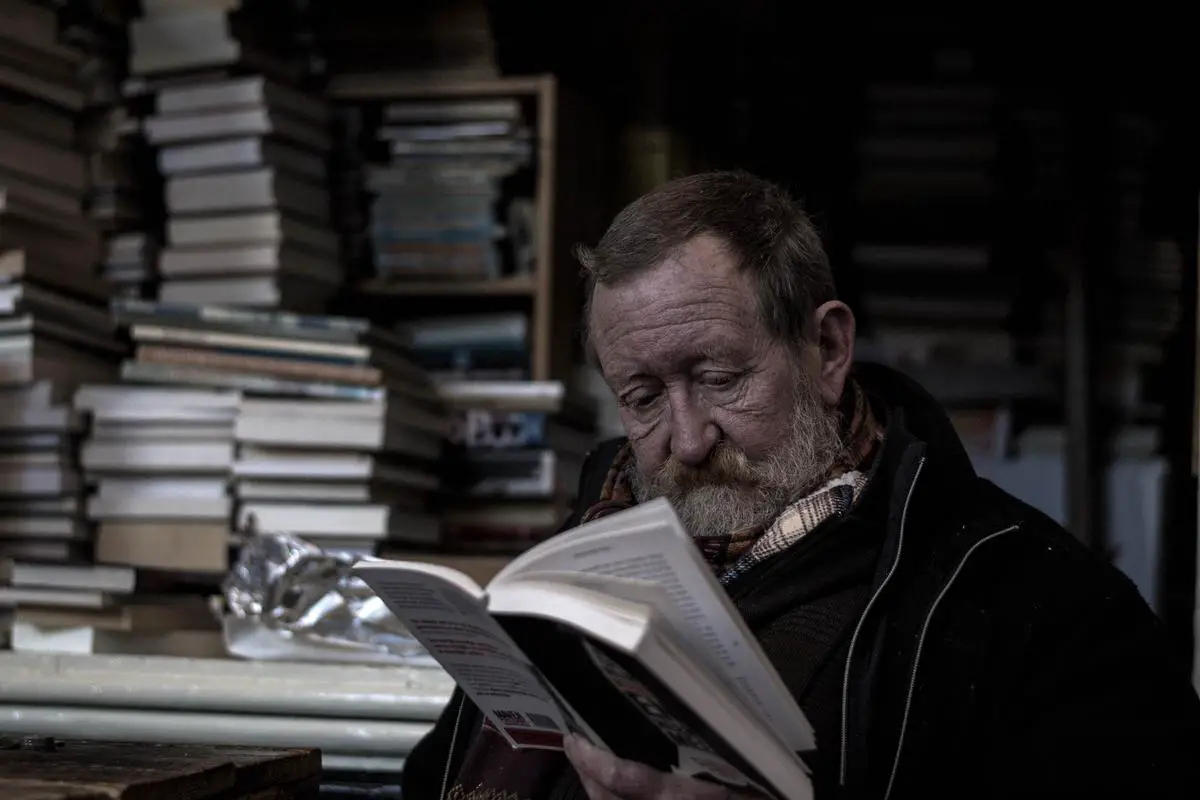Unveiling a fascinating aspect of popular culture, fan mail – particularly directed towards cartoonists – holds a unique place in bridging the gap between admirers and creators. This passion-packed correspondence traces back many years, reflecting evolutions, aspirations, and connections from ardent fans across time and space to the creators of beloved cartoon characters. The history, motivations, content, and impact of such fan mail, as well as its digital transformation, opens up an intriguing canvas for exploration, reflecting the broader narratives of social, cultural, and technological change. As we delve beyond the ink and pixels of these fan letters, we step into a realm where art meets appreciation, creativity mingles with critique, and cartoonists connect with their audience in the most personal and influential manner.
The History and Rise of Fan Mail to Cartoonists
Origin and Emergence of Fan Mail to Cartoonists
Fan mail is an age-old tradition tracing back to the early 19th century when admiring fans would usually write to authors and leaders expressing their appreciation for their work. With the advent of comics and cartoons, there was a shift in the trend towards more popular fun-loving media forms, triggering the beginning of the fan mail practice for Cartoonists.
The first instances of fan mail to cartoonists can be traced back to the early 20th century with the publication of early comic strips such as Krazy Kat and Little Nemo. During these years, the idea of interacting with creators was novel, widening the scope for audience engagement, and allowing fans to showcase their interest, clear queries, give suggestions, or simply express their liking for the comic strips.
Golden Age of Comics: The Rise in Fan Mail
The Golden Age of Comics (1940s-1950s) saw an exponential rise in fan mail volumes. Comic creators like Stan Lee and Jack Kirby of Marvel Comics, and Jerry Siegel and Joe Shuster of DC Comics began receiving massive amounts of fan mail owing to the popularity of characters they created like Spider-Man, the Hulk, Superman, and Batman among others. The volume of fan mail was an early indicator of a character or a series’ popularity which often determined their stamina and longevity in the market.
Types of Fan Mail Received
Fan letters have always carried a personal touch, often showcasing a mix of positive and negative feedback. A typical fan letter would include appreciation for a successful storyline or constructive criticism for a story arc that was deemed unsatisfactory. Fans also frequently sent requests for favorite characters’ appearances or storylines in the comic strips. Appreciative letters often turn into keepsakes with its emotional and sentimental value, while constructive criticism helped creators refine their output.
Fan Mail Impact: From Fan Theories to Character Revisions
The influx of fan interaction, over time, began to show a tangible impact on cartoon creations. For instance, constant commentary and theorization by fans over Calvin and Hobbes’ ambiguity led to its creator, Bill Watterson, adapting and explicitly portraying that Hobbes was real in Calvin’s mind. In another example, fan mail over Batman’s overly violent characterization in the early comic series, led to a revision, making his character more acceptable to a wider range of readers.
The Digital Shift: Social Media Interaction
With the advent of the digital age, fan mail to cartoonists evolved from traditional letters to online comments, tweets, and social media messages. More direct and instantaneous than traditional letters, this new channel of communication has enabled enthusiasts to share their thoughts more freely and frequently, effectively transforming the landscape of interaction between cartoonists and their readership.
Ever since the dawn of pen and paper, fans have always sought ways to express their admiration for their beloved cartoons and the gifted individuals who bring them to life. Whether through heartfelt notes or vibrant social media interactions, fan mail is a key means of forging a special bond between the observers and the creators. In essence, it’s a platform for fans to acknowledge, critique, and be an integral part of the cartoon and comic universe. The reciprocity of this engagement is instrumental in enhancing storyline complexities, championing diversity, adapting personas, and ultimately sparking evolution in the vast realm of cartooning.

The Motivations and Content of Fan Mail
The Drive to Send Fan Mail to Cartoonists
Typically, an impulsive admiration, love, and enthusiasm for a cartoonist’s craft stimulate fans to craft purposeful letters. It’s this deep sense of appreciation for their creativity and artistry that triggers fans to express their feelings. Moreover, it’s the emotional or intellectual chord that the cartoons strike in the viewers’ hearts that incites them to articulate their approval or affection.
In addition, pouring out their insights and crafting theories about the myriad characters and ever-twisting plotlines allow fans to feel included in the whirlwind world of the artists. Such engagement enables the cartoonists to receive a fresh influx of ideas, all seen through the unique lens of a fan, submerging them more deeply into the world of their cherished audience.
Further, fan mail serves as a physical embodiment of the fan-artist relationship, the need for which motivates many fans. Sending a tangible, handwritten letter is akin to a handshake across the distance, a personal dimension to the bond they share with the cartoonist, ensuring a sense of proximity even without direct or face-to-face interactions.
Types of Communications in Fan Mail
The communications contained in fan mail to cartoonists are quite diverse. Many letters contain compliments, praising the artistic skills and expressions manifested in the cartoons. These messages are designed to show appreciation and admiration for the cartoonist’s work.
Critiques also form a significant portion of fan mail. These are constructive feedback or suggestions designed to help improve the artwork or storytelling. Detailed constructive feedback on plot lines, character development, or artistic style can be tremendously useful for cartoonists.
Questions about the characters, their backgrounds, future development plans, and particular plot elements are also quite common. This helps the fans in deeper engagement with the storyline or the characters.
Beyond this, fans often express their personal connections or stories attached to the cartoons. These accounts underline how a particular character, storyline, or drawing has touched them personally or emotionally.
Finally, there are requests for autographs, interviews, and meet-ups as well as queries about merchandise availability or potential collaborations.
Interpreting the Sentiments Behind Fan Mail
Fan mail is versatile in nature, with its general mood swinging widely based on its content and the fan’s underlying purpose. Often, messages of positivity are conveyed through compliments, expressions of adoration, or shared personal experiences. These letters are usually brimming with positivity, high levels of enthusiasm, and lavish praises.
However, there also exists fan mail containing constructive criticism or requests for modifications, potentially presenting a more neutral or negative sentiment. It’s important to note, though, that criticism does not always point to negativity, and instead, could reflect a fan’s passionate involvement with the cartoonist’s work.
In a nutshell, fan mail forges a personal connection between a cartoonist and their audience, creating an avenue for exchange, suggestions, and mutual development in their shared creative journey. This unique type of communication encourages a valuable conversation that benefits both the artist and their admirers.

Photo by mediamodifier on Unsplash
The Impact of Fan Mail on Cartoonists and Their Work
Fan Mail: An Affirmation and Encouragement for Cartoonists
Receiving fan mail from admirers and supporters is a meaningful and significant aspect of a cartoonist’s career. Positive feedback, appreciation and acknowledgement from fans often serve as a powerful morale booster. This kind of interaction with fans not only affirms their talents but also provides a sense of validation for their work. Having their art recognized and enjoyed by those who appreciate it lays the foundations of confidence that motivates the cartoonist to continue producing or enhancing their work.
Sparking Creative Genius: How Fan Mails Inspires Plots and Characters
More than just an ego-booster, fan mail can incite inspiration for cartoonists. Fans often pose questions or share their interpretations of the storyline, give opinions on their favorite characters, or even provide predictions for future plots. This kind of feedback can spark new, creative ideas for cartoonists and give them unique perspectives they might not have considered before. In numerous cases, characters or plot nuances are influenced, sometimes subtly and at other times, directly, by the suggestions or observations derived from fan mails.
Fan Mail: A Source of Motivation
The consistent flow of fan mail also serves as a strong motivation for cartoonists to continue their work. The knowledge that their stories are being appreciated and are impacting people’s lives drives them to create more. It signifies that their creation has resonated with their audience on a level deep enough to compel them to express their gratitude or admiration in writing. This directly influences the drive to keep producing their art which, in turn, leads to a steady influx of engaging, quality content for the fans.
The Unique Relationship Between Cartoonists and Fans
Fan mail has an accompanying secondary function as well – it helps solidify the relationship between the cartoonist and their readers. Every piece of fan mail is a testament to readers’ emotional investment in the work. This creates a connection that extends beyond the traditional artist-audience relationship. It’s a unique bond rooted in shared imagination, created worlds, and storytelling that deepens with every exchange.
Fan mail can also facilitate a dialogue between a cartoonist and their fans; fans can ask questions, seek advice, or express concerns via their letters, and cartoonists can respond, providing clarifications about their work or expressing their gratitude for fan support. This kind of engagement not only deepens the bond between cartoonists and their fans, but it also grounds cartoonists, reminding them that behind every letter is a real person that has been touched by their work.
Fan Mail’s Impact on Cartoonists: A Deep-dive
Fan mail, a cherished route of communication between creators and their audience, holds a significant influence over cartoonists. Not only does it serve as a morale booster for these artists, but it also acts as a valuable validation of their work. The stream of incoming messages frequently ignite new ideas, shaping plot development and character creation. In essence, fan mail and its impact embody the dynamic relationship between cartoonists and their audience, being a vital cog in the creator’s inventive and affirmative journey.

Digital Transformation of Fan Mail
The Digital Revolution: A New Age for Fan Mail
As we have transitioned into the digital age, the traditional means of exchanging fan mail have evolved. Social media, emails, instant messages and comments have redefined the landscape, overtaking handwritten letters and postal delivery. This digital revolution has brought along the perk of swift, seamless communication, offering cartoonists a platform for real-time feedback and interaction with their audience.
How Cartoonists Interact With Fans Today
Today, cartoonists can directly engage with their fans irrespective of geographical boundaries. Platforms such as Twitter, Facebook, Instagram, and emails have become instrumental in facilitating this exchange. Fans can easily comment on a cartoonist’s post or tweet feedback and appreciation, and cartoonists can respond in real time. It’s also become easier to follow up on queries and feedback, making the interaction more personable and meaningful. Furthermore, social media provides a larger public platform for this interaction, creating a digital community of fans.
Contrast With Classical Fan Mail Formats
The traditional format of fan mails involved handwritten letters expressing admiration, criticism, or suggestions that were physically mailed to the cartoonist. This process was more time-consuming, making interaction slower and less frequent. Also, the one-to-one private responses lacked the public visibility seen in the digital platform. Despite this, classical fan mail had its charm and advantages, offering a more personal touch and detail-oriented conversations between the fan and the cartoonist.
Potential Concerns and Consequences
Despite many benefits, the digital transformation of fan mail also brings a set of concerns and challenges. The immediacy of feedback might lead to impulsive reactions from either party. Anonymity on the internet also occasionally enables hate speech and cyberbullying. Additionally, the importance placed on the number of likes, comments, or shares can add pressure and induce stress on cartoonists as they equate social media attention with success.
Future of Fan Mail
While the digital transformation of fan mail continues to shape the interaction between cartoonists and their audience, there is a potential for newer forms of communication to emerge. Animation and augmented reality could add a visual element to fan interactions, allowing fans to experience the art in a much more immersive way.
Additionally, despite the rise in digital correspondence, there is still a subset of fans who value the personal touch of classic fan mail. They feel that physically written letters convey a level of sincerity and cherish the tangibility of written correspondence. As such, traditional fan mail formats might always retain some relevance in the world of fans and their cartoonist idols.
In the end, the digital transformation has indisputably changed the way cartoonists receive fans’ affection and feedback. The evolution will continue to balance between maintaining personal touches and engaging with the wider, fast-paced digital arena.

Photo by nickxshotz on Unsplash
Undeniably, fan mail to cartoonists has evolved – from handwritten letters to emails, tweets, and comments – mirroring societal and technological transitions. However, the essence remains unchanged – it still forms a vital channel facilitating personal, intimate bonds between cartoonists and their fans. It continues to inspire, influence, and validate the creators, subtly shaping the evolution of cartoon narratives. The exchange of fan mail, both traditional and digital, is an enduring testament to the collective impact of individual voices, proving that fans are not mere passive consumers but active contributors to the evolving narrative of cartoon artistry. Transitioning into a digital era, it becomes essential to embrace new forms, yet never losing sight of the nostalgic charm that comes with the classic format.
